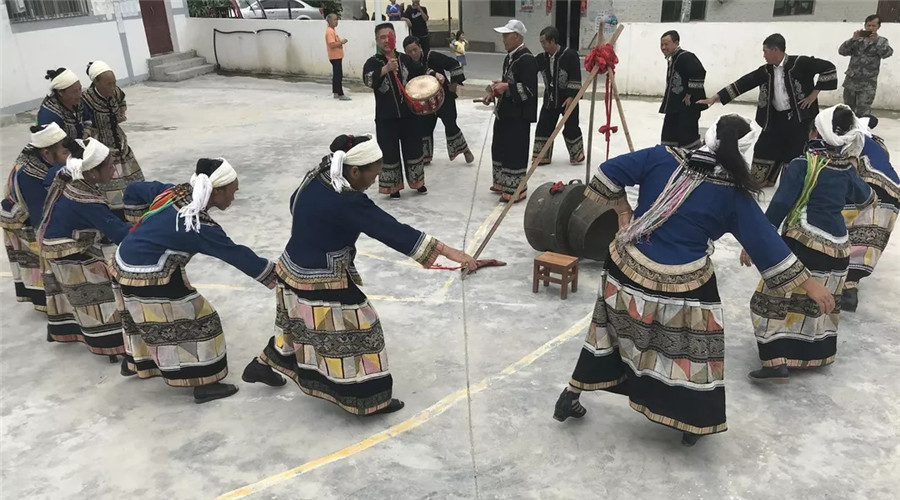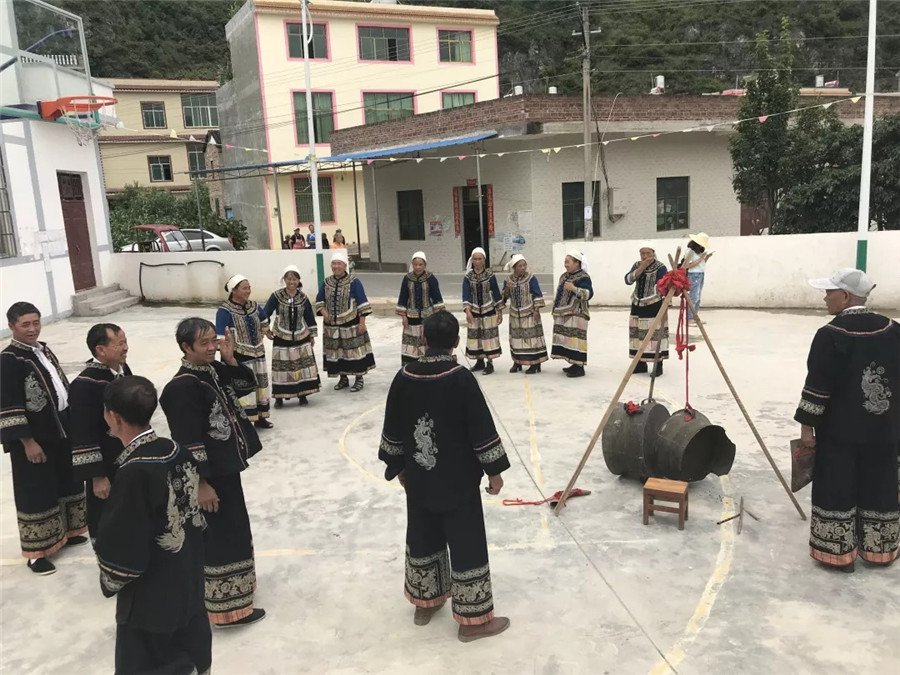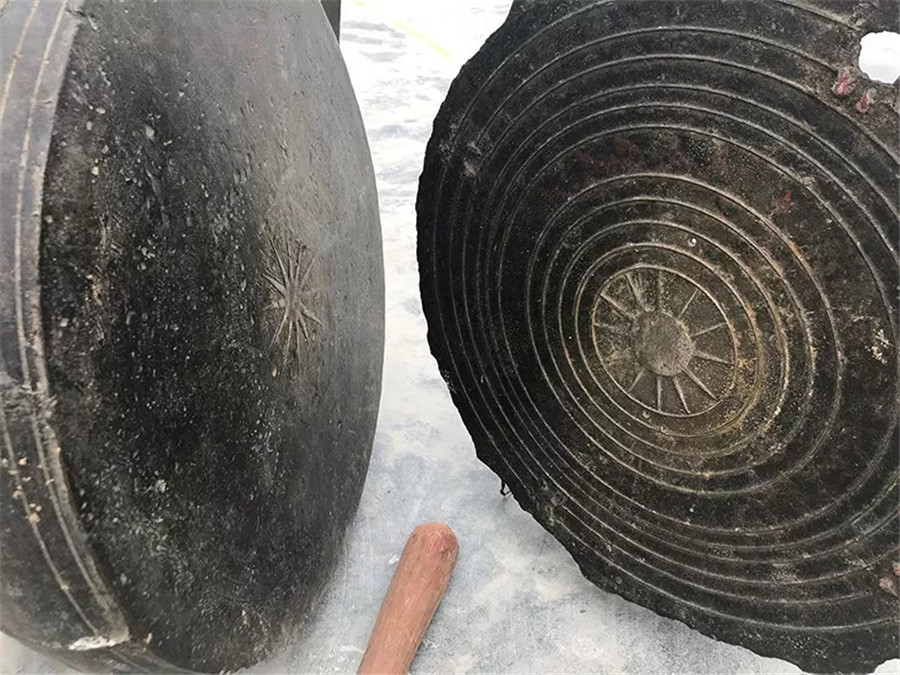
Bronze Drum Dance in Guangnan County, Wenshan
The Bronze Drum Dance (文山壮族、彝族铜鼓舞) is a traditional dance form from the Wenshan Zhuang and Miao Autonomous Prefecture (文山壮族苗族自治州) in Yunnan Province, recognized as one of China’s National-Level Intangible Cultural Heritage items.
This ancient dance is widely practiced among the Zhuang and Yi ethnic groups in Wenshan, particularly in counties such as Guangnan (广南), Malipo (麻栗坡), Funing (富宁), Xichou (西畴), Maguan (马关), and Qiubei (邱北). The most representative styles are found in Guangnan’s Zhuang and Yi communities, as well as among the Yi Bai Luo subgroup in Malipo’s Xinzhai Township (麻栗坡县新寨乡) and Funing’s Muyang Township (富宁县木央乡).
On May 20, 2006, the Bronze Drum Dance was officially listed in the first batch of China’s National Intangible Cultural Heritage (Project No. Ⅲ-26).
Historical Origins
Archaeological discoveries in Guangnan include bronze drums dating back to the Spring and Autumn and Warring States periods, such as the Shaguo Drum (沙果鼓), which is over 2,000 years old. Bronze drums have long symbolized power, served as ritual objects for warding off evil and praying for blessings, and functioned as sacred musical instruments.
The dance originated from the Zhuang and Yi ancestors’ worship of nature and ancestors. The Yi people believe bronze drums embody the spirit of all things, and dancing to their rhythms conveys human wishes to heaven and ancestors. The Zhuang, meanwhile, view the dance as a way to expel evil spirits and pray for communal peace.



Dance Characteristics
The Bronze Drum Dance is a collective ethnic dance performed in a circle, with dancers moving counterclockwise to the drumbeats. Each set of movements reflects agricultural and daily life activities of the Zhuang and Yi people.
- In Guangnan’s Nasa Town (那洒镇), the Zhuang community in Magui Village (马贵村) preserves 12 complete dance sets, each representing a different month of the farming year.
- In Malipo and Funing, the dance is performed for rituals such as rain prayers, harvest celebrations, and funerals.
- The Zhuang style features a unique musical technique: one performer strikes the bronze drum while another uses a wooden box to create resonant glissando effects.
- The Yi style involves 12 tonal combinations played on paired “male” (representing the sun) and “female” (representing the moon) drums, symbolizing the 12 months of the year and reflecting their calendrical traditions.
The dance embodies the Zhuang and Yi peoples’ natural and ancestral worship, showcasing rich historical, cultural, and artistic value.
Safeguarding and Transmission
Cultural Significance
The dance is a crystallization of Zhuang collective wisdom and a dynamic art form that has been passed down orally and through practice for centuries.
Current Challenges
Due to external cultural influences, younger generations of Zhuang and Yi people lack deep engagement with this tradition, leading to a decline in practitioners. Without urgent preservation efforts, the dance risks disappearing.
Representative Inheritors
- Liang Zhenggong (梁正功), male, Zhuang ethnicity, national-level inheritor.
- Huang Zhengwu (黄正武), male, Yi ethnicity, national-level inheritor.
- Lu Xiaozong (陆孝宗), male, Yi ethnicity, national-level inheritor.
Protection Measures
- On October 31, 2023, the Wenshan Intangible Cultural Heritage Protection and Art Research Center (文山壮族苗族自治州非物质文化遗产保护和艺术研究中心) was confirmed as the competent safeguarding body.
- The dance was featured in the 2025 Intangible Cultural Heritage Gala on February 1, 2025.
Social Impact
Key Events
- On February 22, 2012, Guangnan County established a demonstration site for the dance in Guima Village (贵马村).
- On November 19, 2023, Funing County hosted a cultural exhibition showcasing the dance and Lusheng (芦笙) traditions.
For Chinese version please go to:
http://www.ynich.cn/view-ml-11111-1211.html

 7 Days GolfingTour
7 Days GolfingTour
 8 Days Group Tour
8 Days Group Tour
 8 Days Yunnan Tour
8 Days Yunnan Tour
 7 Days Shangri La Hiking
7 Days Shangri La Hiking
 11 Days Yunnan Tour
11 Days Yunnan Tour
 6 Days Yuanyang Terraces
6 Days Yuanyang Terraces
 11 Days Yunnan Tour
11 Days Yunnan Tour
 8 Days South Yunnan
8 Days South Yunnan
 7 Days Tea Tour
7 Days Tea Tour
 8 Days Muslim Tour
8 Days Muslim Tour
 12 Days Self-Driving
12 Days Self-Driving
 4 Days Haba Climbing
4 Days Haba Climbing
 Tiger Leaping Gorge
Tiger Leaping Gorge
 Stone Forest
Stone Forest
 Yunnan-Tibet
Yunnan-Tibet
 Hani Rice Terraces
Hani Rice Terraces
 Kunming
Kunming
 Lijiang
Lijiang
 Shangri-la
Shangri-la
 Dali
Dali
 XishuangBanna
XishuangBanna
 Honghe
Honghe
 Kunming
Kunming
 Lijiang
Lijiang
 Shangri-la
Shangri-la
 Yuanyang Rice Terraces
Yuanyang Rice Terraces
 Nujiang
Nujiang
 XishuangBanna
XishuangBanna
 Spring City Golf
Spring City Golf
 Snow Mountain Golf
Snow Mountain Golf
 Stone Mountain Golf
Stone Mountain Golf










